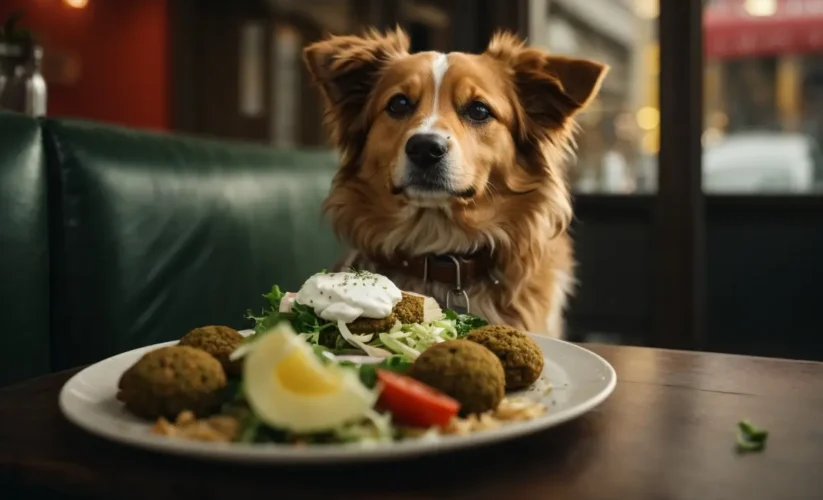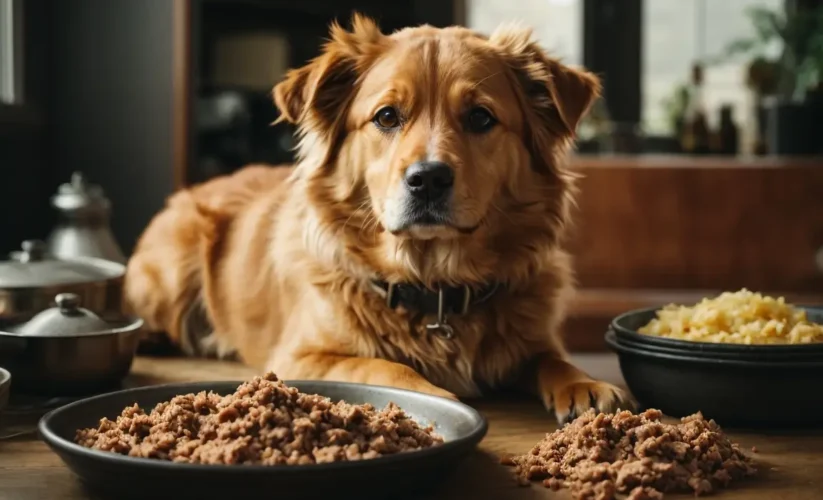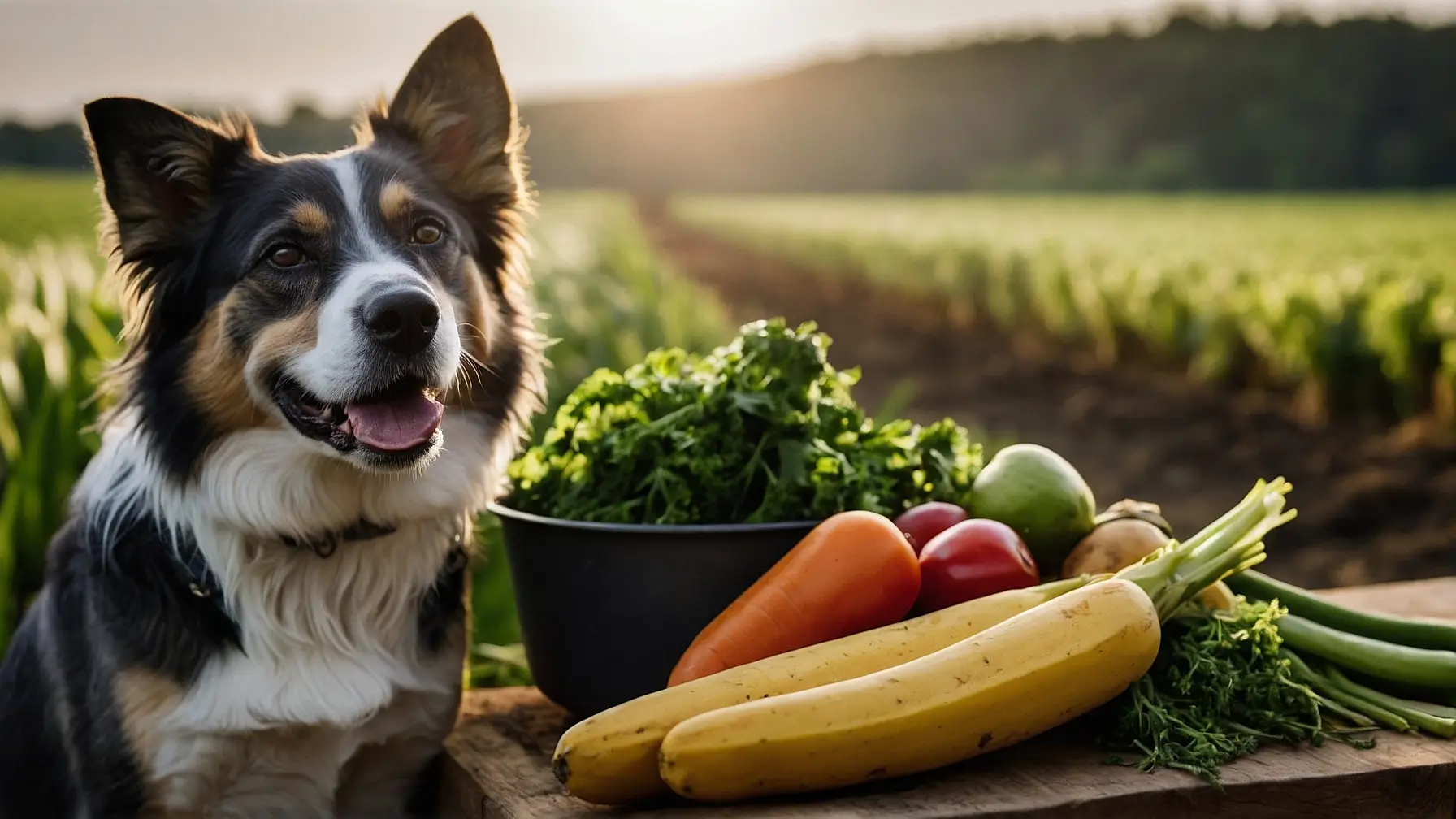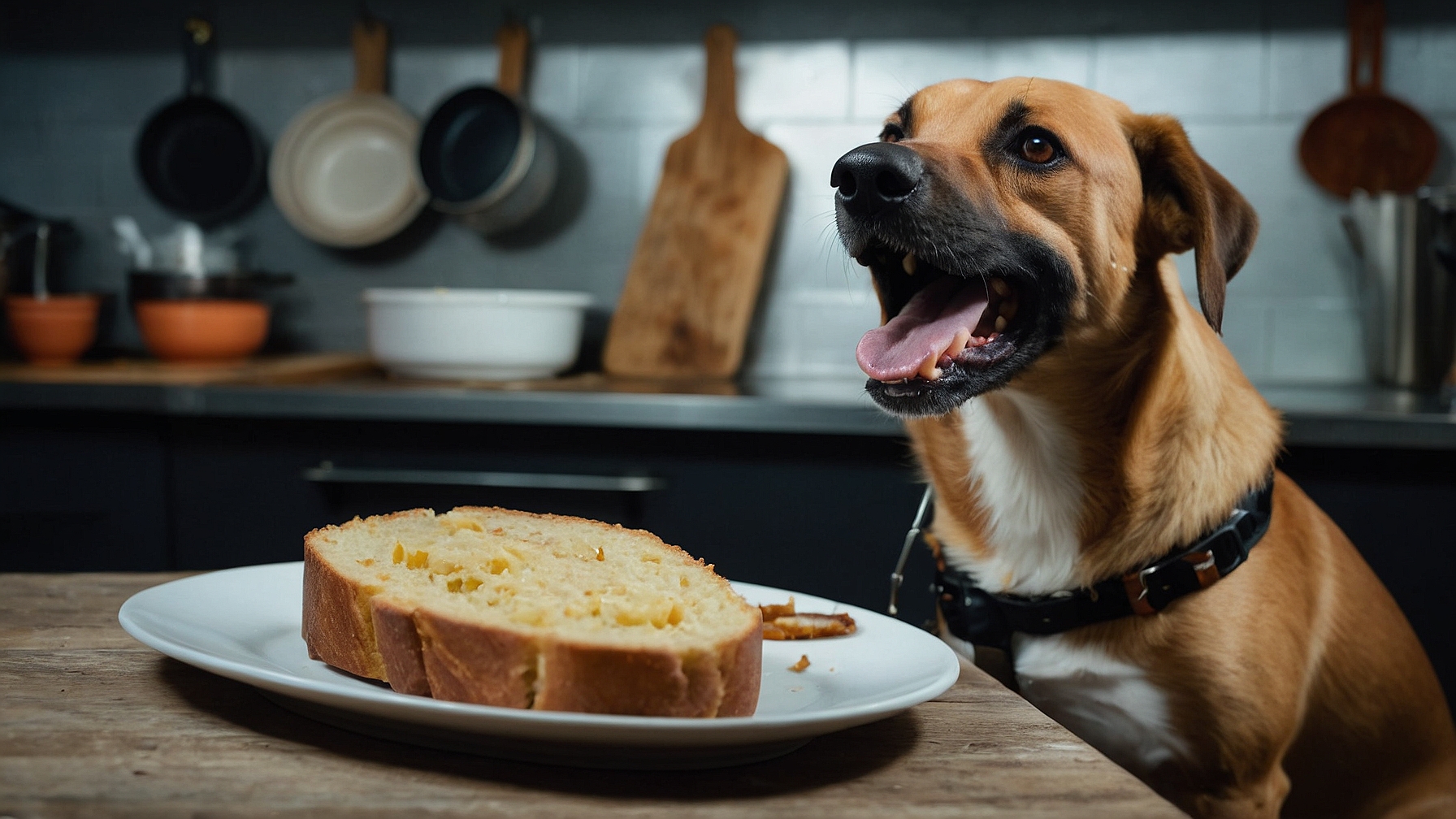Can dogs eat falafel?

As a seasoned dog blogger with years of experience and a loving dog owner myself, I’ve always been fascinated by the complexities of canine nutrition. Understanding what is safe and beneficial for our furry friends to eat is crucial for their health and well-being. Today, I delve into a popular topic that has sparked curiosity among many dog owners: ‘Can dogs eat falafel?’ and its suitability as a treat for dogs.
Falafel, a beloved staple in Middle Eastern cuisine, is known for its rich flavors and nutritious ingredients. Traditionally made from ground chickpeas or fava beans, this deep-fried delicacy is celebrated not only in its native Levantine regions but also globally. Its rise in popularity begs an important question for pet parents: Can our canine companions safely enjoy falafel?
To answer this, it’s essential to consider the nutritional needs and restrictions of dogs. Unlike humans, dogs have different digestive systems and dietary requirements. What might be a healthy snack for us could be harmful to them. Therefore, this exploration isn’t just about the direct effects of falafel on dogs but also about understanding the broader context of canine nutrition and safety.
In this blog post, we will meticulously examine the question ‘Can dogs eat falafel?’ by looking at the ingredients of falafel, their potential benefits, and the risks they pose to dogs. We’ll explore not only the primary components of falafel but also its common seasonings and cooking methods, which play a critical role in determining its suitability for canine consumption. Additionally, we will broaden our scope to include other popular Levantine dishes, assessing their safety and nutritional value for dogs. This comprehensive guide aims to equip dog owners with the knowledge needed to make informed decisions about their pets’ diets, ensuring that our four-legged friends stay healthy and happy.
Is Falafel Good for Dogs?
Falafel, at its core, is made from chickpeas or fava beans—both of which are non-toxic to dogs. Chickpeas, in particular, are a good source of protein, fiber, and essential nutrients like folate and manganese, which can be beneficial in a dog’s diet. Protein supports muscle development and energy, while fiber aids in healthy digestion. The vitamins and minerals in these legumes contribute to overall health, supporting everything from metabolic functions to immune system health.
However, the benefits of the primary ingredients in falafel are often overshadowed by the way it is prepared and the additional ingredients used. The deep-frying process, a key aspect of making traditional falafel, introduces high levels of fats and oils. While dogs require some fat in their diets, excessive amounts can lead to obesity and related health issues like diabetes, pancreatitis, and joint problems. Pancreatitis, in particular, is a concern as it can be triggered by high-fat foods and is a painful and potentially serious condition for dogs.
Moreover, the typical seasoning blend for falafel includes ingredients like garlic and onions, which are harmful to dogs. These ingredients contain compounds that can cause oxidative damage to red blood cells, leading to anemia. Symptoms of anemia in dogs include lethargy, weakness, and pale gums, and it can become a life-threatening condition without prompt veterinary treatment.
In addition to these risks, the spices used in falafel, such as cumin and coriander, may not be toxic but can cause digestive upset in dogs. Spices that we find flavorful can be too strong for a dog’s digestive system, leading to gastrointestinal distress, including vomiting and diarrhea. The salt content in falafel is another concern. While salt is an essential part of a dog’s diet in small amounts, too much salt can lead to dehydration and salt poisoning, characterized by symptoms like excessive thirst, urination, and even neurological issues in severe cases.
Therefore, when addressing the query ‘Can dogs eat falafel?’, it becomes clear that while the basic ingredients of falafel might not be inherently harmful to dogs, the combination of high fat, harmful seasonings, and potential digestive irritants makes it an unsuitable and risky food choice for our canine friends.
Is Falafel Bad for Dogs?
When assessing the suitability of falafel for dogs, it’s important to consider the cumulative effect of its ingredients and preparation method. The primary concern with falafel is its high-fat content due to deep frying. Dogs consuming high amounts of fat can suffer from immediate gastrointestinal issues like vomiting and diarrhea. Over time, regular intake of fatty foods can lead to more serious health problems, including obesity, which is linked to a myriad of health issues in dogs such as diabetes, heart disease, and joint problems. Additionally, obesity can reduce a dog’s lifespan and affect their quality of life.
The use of garlic and onion in falafel presents a significant health risk to dogs. These ingredients contain thiosulfates, which are toxic to dogs and can lead to oxidative damage to red blood cells. This damage can cause hemolytic anemia, a dangerous condition where the body destroys its own red blood cells faster than it can produce them. Symptoms of anemia in dogs include weakness, rapid breathing, and lethargy. In severe cases, it may require urgent veterinary care, including blood transfusions.
Furthermore, when considering ‘Can dogs eat falafel?’, it’s important to note that the spices used in falafel, while not necessarily toxic, can still be harmful to dogs. Dogs have more sensitive digestive systems compared to humans. Spices and heavy seasonings, common in falafel, can cause stomach upset, including gas, bloating, and discomfort. Additionally, the salt content in falafel is another concern for dogs. While sodium is an essential electrolyte in a dog’s diet, excessive salt intake can lead to dehydration, electrolyte imbalances, and in severe cases, salt poisoning. Symptoms of salt poisoning include vomiting, diarrhea, tremors, and seizures.
It’s also worth considering the size and breed of your dog when evaluating the risks of falafel. Smaller dogs, for instance, are more susceptible to the effects of toxic ingredients and high-fat foods due to their size and metabolic rate. Similarly, certain breeds are more prone to food sensitivities and digestive issues, making them more vulnerable to the adverse effects of falafel.
Are Other Culinary Levantine Dishes Safe For Dogs?
Exploring other Levantine dishes alongside the question ‘Can dogs eat falafel?’ reveals a mixed bag in terms of safety and suitability for dogs. Many of these dishes contain ingredients and seasonings that can be harmful to canines. For example, hummus, another popular chickpea-based dish, often includes garlic and lemon juice – both of which are not recommended for dogs. Lemon juice can cause stomach upset, and garlic, as previously mentioned, is toxic.
Baba ganoush, made primarily from eggplants, is generally safe for dogs in small quantities. However, the additional ingredients like onions, garlic, and spices used in its preparation can pose health risks to dogs. Therefore, if considering baba ganoush as a treat, it’s important to ensure it’s free from these harmful additives.
On the other hand, plain, cooked chickpeas, without any added seasonings, can be a healthy and safe snack for dogs in moderation. They are a good source of protein, fiber, and essential nutrients, beneficial for a dog’s diet. Similarly, plain, boiled chicken, commonly used in dishes like shawarma, is a safe and nutritious option for dogs, provided it is served without the skin, bones, and any added spices or high-fat sauces.
In summary, while certain components of Levantine cuisine can be incorporated into a dog’s diet safely, it’s crucial to be mindful of the ingredients and preparation methods. Avoiding dishes with harmful additives and opting for plain, unseasoned foods is the best approach to ensure the safety and health of your canine companion. Always remember that treats should only be a small part of your dog’s overall diet, and their main meals should consist of balanced, high-quality dog food.
Final Thoughts
As we conclude this exploration into the question, ‘Can dogs eat falafel?’ and the suitability of falafel and other Levantine dishes for dogs, it becomes evident that the world of canine nutrition is complex and requires careful consideration. Dog owners, like myself, are often tempted to share our favorite foods with our furry companions, driven by love and the desire to treat them. However, our responsibility as pet parents is to prioritize their health and dietary needs, even if it means restricting them from certain human foods.
Falafel, with its deep-fried nature and potentially toxic ingredients like garlic and onions, emerges as an unsuitable and risky choice for dogs. The high-fat content poses a risk of pancreatitis, obesity, and other health issues, while the spices and seasonings can lead to gastrointestinal upset. In understanding these risks, we must recognize that the nutritional needs of dogs are vastly different from ours. Foods that are healthy for humans can be harmful to dogs, and what we consider a tasty treat can lead to serious health complications in our pets.
This exploration also sheds light on the broader spectrum of Levantine cuisine, revealing that while some ingredients like plain chickpeas and boiled chicken can be beneficial in moderation, others are best avoided. The key takeaway is to always be cautious and to scrutinize the ingredients and preparation methods of any food we consider giving to our dogs. Avoiding foods with harmful additives and opting for plain, unseasoned, and properly cooked options is the safest route.
Moreover, this discussion highlights the importance of education and awareness in pet nutrition. As dog owners, we must continually educate ourselves and stay updated on what is safe and what is not for our pets. Consulting with veterinarians and canine nutrition experts can provide valuable insights and guidance tailored to our individual dogs’ needs, considering factors like age, breed, size, and health status.
In our quest to provide the best for our dogs, we must also remember that treats should only constitute a small portion of their diet. The foundation of a dog’s nutrition should be a well-balanced, high-quality dog food specifically formulated for their dietary requirements. Treats are just that – occasional extras and not a staple of their diet.
In conclusion, while sharing our lives and homes with dogs brings immeasurable joy and companionship, it also brings the responsibility of making informed choices about their diet. By understanding the potential risks of certain foods like falafel and being cautious with what we feed them, we can ensure that our dogs live long, healthy, and happy lives. Let’s cherish our furry friends by making decisions that are in their best interest, keeping their tails wagging and their bodies healthy.










